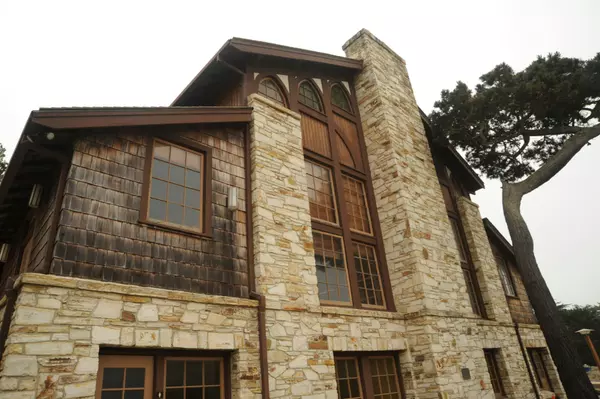Mello-Roos Taxes in Monterey County: What Buyers Need to Know

Buying a home in Monterey County is exciting for reasons we all know: ocean views, redwood groves, golf courses, small-town charm, and so much more. But before you pop the champagne, you’ll want to make sure you’re not blindsided by a four-syllable phrase that shows up on your property tax bill: Mello-Roos.
Sounds like a tropical cocktail, right? Unfortunately, it’s not.
Here’s what Mello-Roos actually is, why it matters in Monterey County, and what every buyer should know before signing on the dotted line.
WHAT IS MELLO-ROOS, ANYWAY?
Mello-Roos isn’t a type of property tax — it’s an additional tax.
In California, cities, counties, and school districts sometimes form what’s called a Community Facilities District (CFD). When that happens, they can issue bonds to pay for big public projects: schools, parks, police and fire stations, roads, water systems, libraries, and more.
To pay those bonds back? They charge homeowners within the district an extra annual fee — the Mello-Roos tax.
So if you’re buying a home in a Mello-Roos district (e.g. East Garrison), you’re signing up for that extra line item on your tax bill.
HOW LONG DO MELLO-ROOS TAXES LAST?
Most Mello-Roos taxes last 20–40 years (the length of the bond that funded the project). Some expire; others can be extended. The fine print lives in the property’s title report and tax bill — two things you’ll want to review closely before you buy.
HOW MUCH IS THE TAX?
That’s the million-dollar (or in this case, thousands-of-dollars) question.
The amount depends on:
- The specific CFD (every district sets its own rate).
- The size of your property.
- What the bonds were used to fund.
In Monterey County, Mello-Roos amounts typically range from a few hundred dollars to several thousand per year. The important thing is: it’s not negotiable. You can’t opt out. If you buy in, you pay it.
WHERE DO YOU FIND MELLO-ROOS IN MONTEREY COUNTY?
Not every neighborhood has them. Mello-Roos is more common in newer developments, where public infrastructure was needed upfront. In Monterey County, that means you’re more likely to run into Mello-Roos in newer subdivisions or planned communities, rather than historic neighborhoods or established areas. One clear example is East Garrison, but there are other neighborhoods of a similar nature that have them, too.
WHY BUYERS SHOULD CARE
Here’s where Mello-Roos becomes more than fine print:
- It Affects Your Monthly Payment
Lenders qualify you based on your debt-to-income ratio. Mello-Roos is part of your property tax bill, so it directly impacts your monthly payment. If you’re on a tight budget, that extra $200–$400 a month could change what you can afford. - It’s Not Always Obvious Up Front
Property listings don’t always highlight Mello-Roos. You might fall in love with a house, only to discover late in the process that it comes with a surprise tax bill. - It Can Affect Resale Value
Buyers are wary of extra taxes. If you buy in a Mello-Roos district, be prepared that when you sell, it could be a sticking point for future buyers, especially if similar nearby homes don’t carry the tax. - It Funds Real Benefits
On the flip side, Mello-Roos isn’t just a money pit. It pays for schools, parks, public safety, and infrastructure that make neighborhoods more desirable. A good school district or beautifully maintained community can offset the sting of the tax in the long run.
QUESTIONS TO ASK (OR DISCUSS WITH YOUR AGENT) BEFORE BUYING IN A MELLO-ROOS DISTRICT
- How much is the annual tax, and how is it calculated?
- When does it expire (if at all)?
- What does it pay for in this specific district?
- How does it compare to nearby neighborhoods without Mello-Roos?
- Will this impact my ability to resell the home in the future?
THE BUYER’S BALANCING ACT
At the end of the day, Mello-Roos isn’t inherently bad. it’s just another factor to weigh. For some buyers, it’s worth it: a slightly higher tax bill in exchange for new schools, safer streets, and better amenities. For others, it’s a dealbreaker, especially if every dollar counts toward qualifying for a loan.
The key is knowing about it before you buy, and weighing it as part of your overall decision — not discovering it after you’ve moved in.
BOTTOM LINE
Mello-Roos taxes are one of those hidden details that can make or break a deal for buyers in Monterey County. They’re not everywhere, but when they show up, they matter.
If you’re exploring homes in the area, make sure you (and your agent) dig into the tax records early. The right guidance will help you understand whether a property’s Mello-Roos is a fair tradeoff for what you’re getting — or a red flag that means it’s time to keep looking.
BUYING IN MONTEREY COUNTY? LET’S TALK!
Our team makes it a point to flag Mello-Roos and other hidden costs early in the process, so buyers don’t end up surprised at closing. If you’re thinking about making a move in Monterey County, we’d love to help you navigate the details, from hidden taxes to neighborhood nuances.
Categories
Recent Posts










GET MORE INFORMATION

